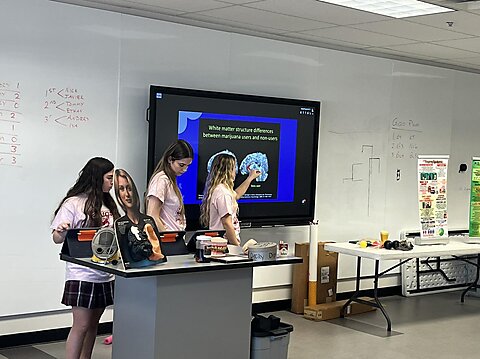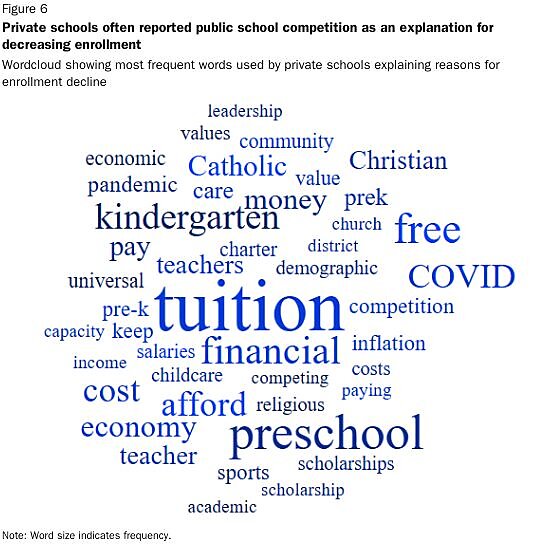Since the widespread adoption of public schooling, private schools have had an existential problem: it is very difficult to compete with “free.” When COVID-19 brought the country to a halt in March 2020, private schooling looked to be in big trouble. Why would people voluntarily pay for education, on top of taxes, that would not even be in person? Consistent with that, at first, private schools went out of business in significant numbers. But then things changed: Private schools saw a burst in enrollment as they tended to return to in-person instruction faster than public schools. It is a burst that the latest Private School Enrollment Survey indicates might be ending.
The core finding, as shown below, in this year’s survey is that 40 percent of private schools reported enrollment gains between the 2023–24 and 2024–25 academic years, versus 32 percent reporting losses and 28 percent reporting no change.
This continues a trend seen since the start of the 2021–22 school year: higher shares of schools reporting enrollment increases than decreases. But as you can see below, the share reporting decreases has steadily risen over the last four years, while the share of gainers has fallen.
We have also seen a steady decline in average enrollment change, as shown below.
That the bubble would deflate is not surprising. The basic problem of having to pay twice for private education did not disappear, and once public schools reopened to in-person education, the stark need for alternatives went away. When COVID-19 waned, some families likely found they preferred their new private schools and remained there, possibly also bringing in some other families. But the difference in public and private school services had diminished. Consistent with this, free responses from school operators that reported enrollment losses, highlighted in the word cloud below, indicate that many believe financial concerns have played a significant part in their decline.
On the other side, the end of the pandemic coincided with a rise in culture war: values-laden battles over history curricula, books in school libraries, sports participation, and more. This might have encouraged more people to pursue private options and catalyzed greater political impetus for creating or expanding private school choice programs that help mitigate the paying-twice problem. Consistent with this, operators of schools that experienced enrollment gains often cited values as a reason they thought families selected them.
It will be interesting to see how this plays out in the coming years. To help monitor this, Cato conducts the annual enrollment survey and maintains the Private Schooling Status Tracker, which catalogs announced private school openings and closings, both since the onset of the pandemic and, in graphic form, coinciding with the current academic year.
Of course, our tracking has limitations. The database on the population of private schools from which we draw is no doubt missing some schools, especially new ones such as microschools, and we are relying on self-reported information from school operators who likely have many things on their plates. Also, tracking announced openings and closures only captures changes that are both publicly announced and that come to our notice. But our data are likely the most current available, helping to keep a finger on the pulse of the private schooling sector, even if imperfectly.






